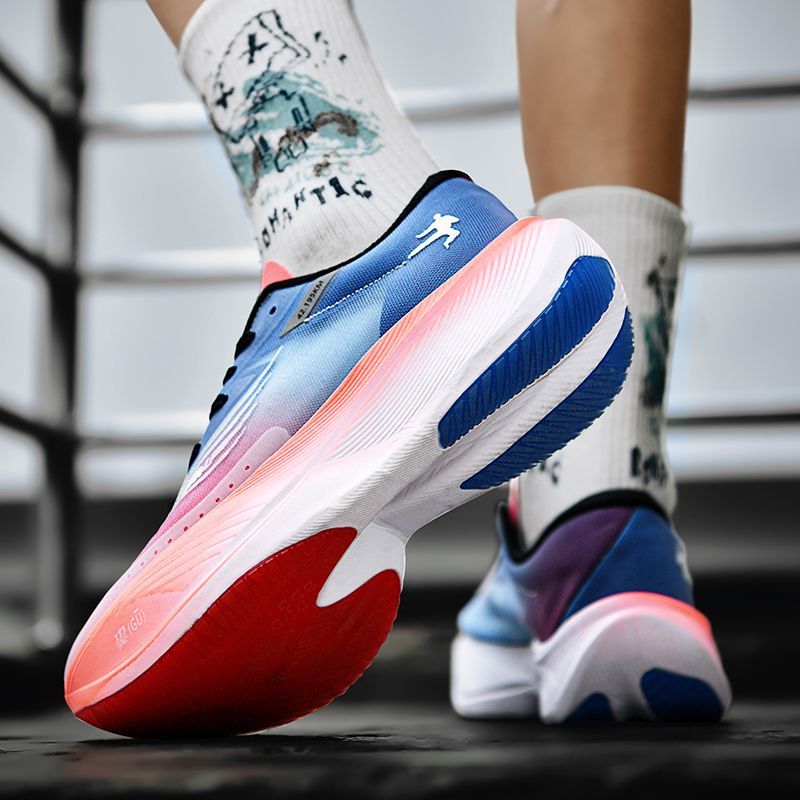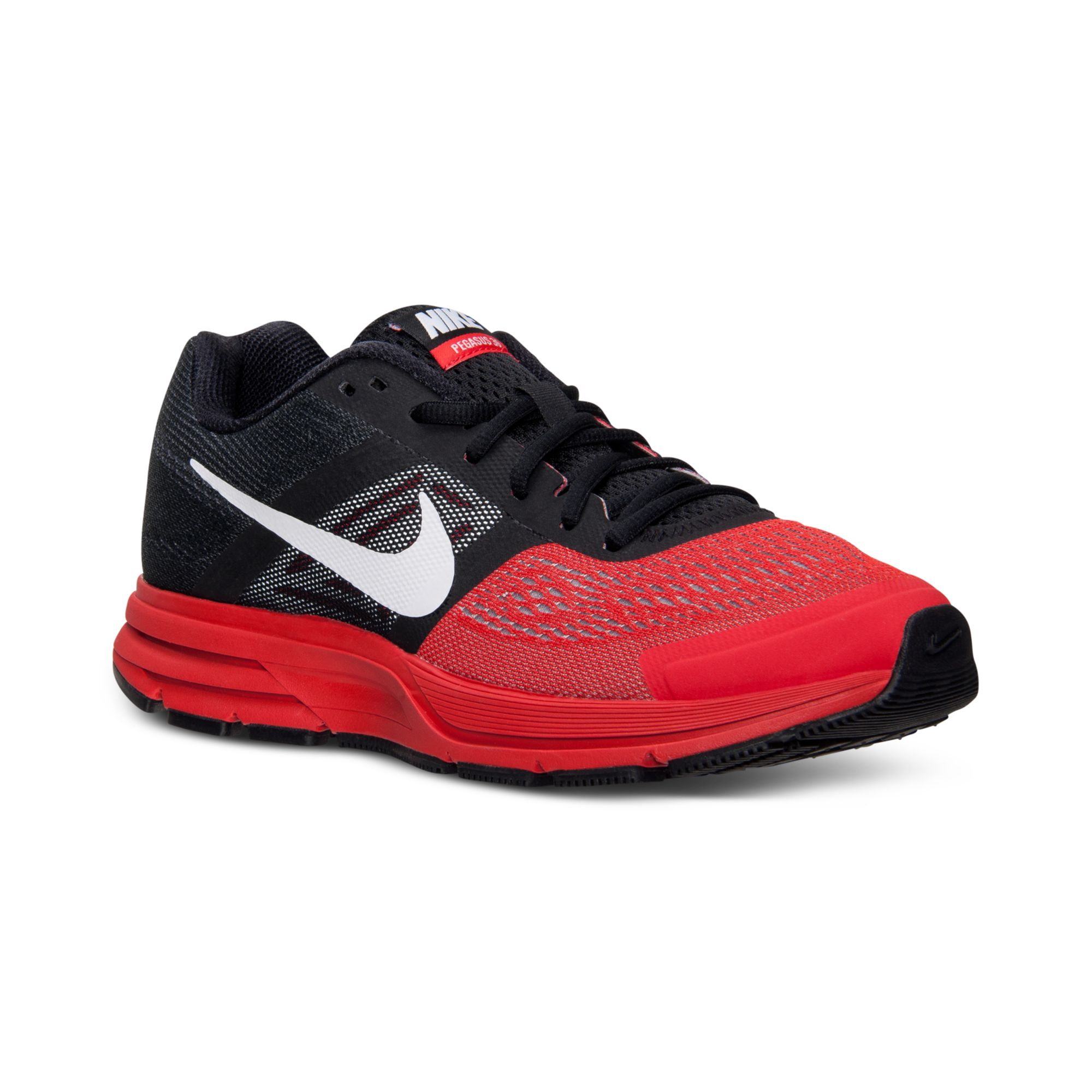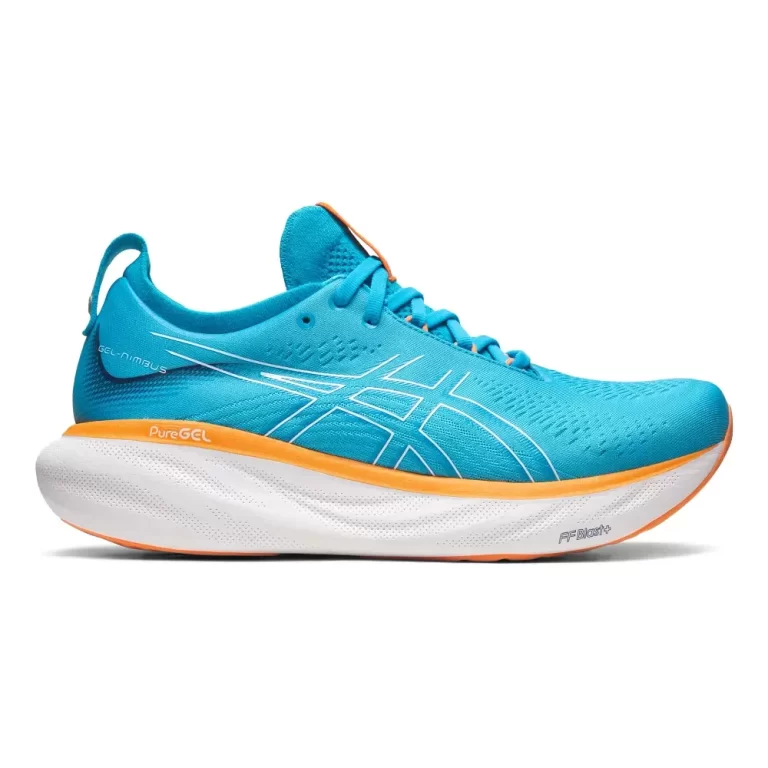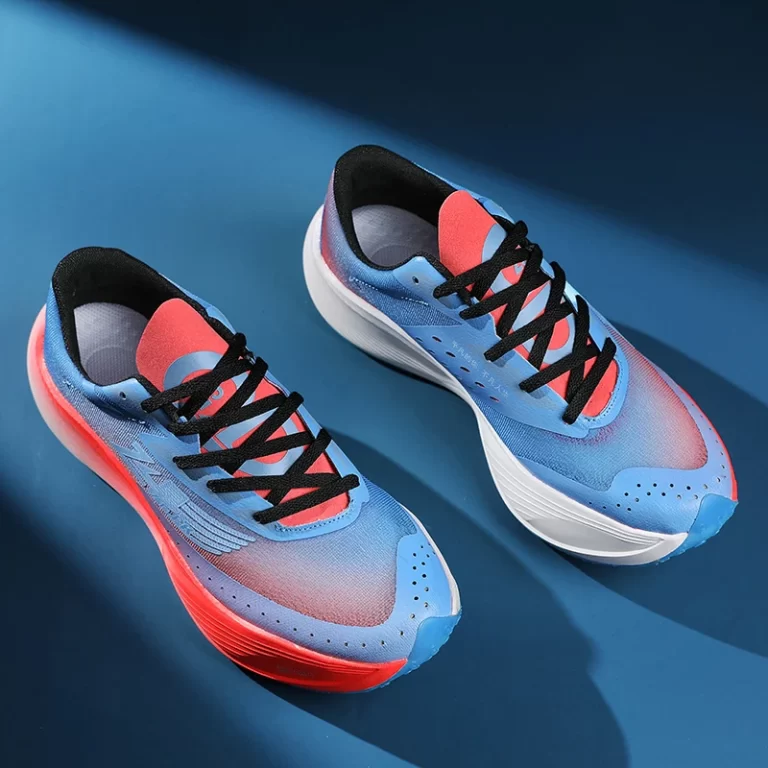
Running Shoes Lifespan: How Often to Change Running Shoes?
Signs It’s Time for New Running Shoes
Knowing when to replace your running shoes is key to preventing injuries and maintaining optimal performance. How often to change running shoes? Here are some clear signs that it’s time to invest in a new pair:
- Tread Wear: Examine the soles of your shoes. If the tread, especially in high-impact areas like the heel, is worn down, it’s a strong indicator you need new shoes.
- Cushioning: Press into the midsole with your thumb. If it feels hard and unresponsive, the cushioning is likely compacted and no longer effective.
- Aches and Pains: Pay attention to new or unusual pain in your feet, knees, hips, or back after running. This could signal that your shoes are no longer offering proper support.
- Mileage: Keep track of how many miles you’ve run in your shoes. Running experts often recommend replacing shoes every 300 to 500 miles.
- Age of the Shoes: Don’t rely solely on mileage. Even with low miles, shoes older than a year may have degraded materials.
- Twist Test: Hold the shoe at both ends and twist. A good shoe should be firm and not twist easily.
- Fit: If your shoes feel looser than when they were new, or if your feet have started to slide around inside, the structural integrity may be compromised.
Remember, running in worn-out shoes can increase the risk of injury. If you notice any of these indicators, it’s likely time to start shopping for a new pair of running shoes. Always prioritize the health of your feet and your overall running experience by checking your shoes regularly and knowing how often to change running shoes based on usage and wear.
Factors That Affect Running Shoe Lifespan
Several factors can influence how often to change running shoes. Understanding these can help you judge when it’s time for a replacement. Here are the main factors:
- Running Frequency: How often you run is crucial. Daily runners may need to replace shoes sooner than casual joggers due to more frequent wear and tear.
- Surface Type: The type of surface you run on matters. Rough terrains like trails wear down shoes quicker than smooth tracks or treadmills.
- Running Style: Your running style, including how your foot strikes the ground, affects shoe lifespan. Overpronators or supinators might notice uneven wear.
- Body Weight: Heavier runners may compress shoe cushioning faster, shortening the shoe’s life.
- Shoe Quality: Higher quality shoes with robust materials usually last longer than budget options.
- Climate and Storage: Shoes kept in damp or extreme conditions may degrade faster. Proper storage extends lifespan.
- Maintenance: Regular cleaning and care, like airing out shoes and rotating pairs, can prolong life.
Preview these factors regularly to stay on top of your running shoe’s condition. Catching signs of wear early can save your feet from discomfort and prevent injuries. Pay attention to these aspects to know exactly when to invest in a new pair of running shoes.
The Role of Mileage in Shoe Degradation
Mileage plays a crucial role in determining the lifespan of your running shoes. Simple math dictates: the more miles you cover, the quicker your shoes will wear out. This is why tracking mileage is pivotal for understanding how often to change running shoes. Experts have a general rule of thumb: replace your shoes every 300 to 500 miles. Yet, this range can vary.
Heavy runners might see shoes degrade faster, pushing towards the lower end of that spectrum. Conversely, light runners often reach towards the upper end. Surfaces also affect mileage impact. Shoes often wear down quicker on rough, uneven trails than on smooth tracks or treadmills.
Individual gait patterns influence wear patterns too. Runners who overpronate or supinate may experience uneven shoe degradation, affecting mileage estimations. Given these variables, it’s wise to adjust expectations based on personal running habits and conditions. To gauge effectively how often to change running shoes, consider marking the date of purchase and tracking each run. This helps foresee the need for new shoes before the risks of injury rise.
In conclusion, pay close attention to mileage but balance it with other signs of shoe wear. Combining mileage with other factors ensures that you’ll recognize when it’s time for a new pair of running shoes.

How Different Running Styles Impact Shoe Wear
Every runner has a unique style, impacting how often to change running shoes. The way your foot contacts the ground makes a big difference in wear patterns.
- Heel Strikers: Heel striking can lead to quicker wear in the heel area of the shoe.
- Midfoot Strikers: These runners might notice more wear in the midsole area.
- Forefoot Strikers: Wear often shows at the forefoot region due to repeated pressure.
- Overpronators: Extra stress on the inner side of the shoe causes more rapid deterioration.
- Supinators: The outer edge of the shoes may wear down faster for these runners.
Each style affects the cushioning and support structures differently. Heel strikers may break down the rear cushioning faster than midfoot or forefoot strikers. Overpronation and supination can twist shoes over time, stressing materials and seams unequally. This can alter how shoes need to shift and absorb impact.
To sum up, your running style is a critical factor for how often to change running shoes. Inspect your shoes often, focusing on areas that align with your style. This will alert you to wear before it turns into pain or injury. And keep in mind, understanding your running style could also guide you in selecting shoes built to withstand your specific wear pattern, potentially extending their life.
Tips for Extending the Life of Your Running Shoes
To avoid having to change running shoes too often, consider these practical tips. Proper care can add miles to a shoe’s lifespan and save money in the long run. Here’s how you can extend the life of your running shoes:
- Rotate Your Shoes: Don’t wear the same pair each day. Rotating between multiple pairs allows them to recover and last longer.
- Proper Cleaning: Clean dirt and debris after runs. Be gentle and let them air dry. Avoid direct heat which can damage materials.
- Use for Running Only: Reserve your running shoes strictly for runs. Wearing them for other activities can speed up wear.
- Correct Storage: Store your shoes in a cool, dry place. Avoid leaving them in extreme temperatures or wet environments.
- Lace Properly: Tighten laces evenly to maintain the shoe’s shape and avoid unnecessary stress on the fabric.
- Mind the Insoles: Remove and air out the insoles regularly. This helps prevent moisture buildup that can break down materials.
- Listen to Your Body: Don’t ignore pain. It can signal that your shoes are failing to provide necessary support and cushioning.
While these tips help, remember nothing lasts forever. Regularly assess your shoes for signs of wear and understand how often to change running shoes based on how they perform and feel during your runs.
The Consequences of Running in Worn-Out Shoes
Running in worn-out shoes can negatively impact your health and performance. Here are the consequences you might face:
- Increased Injury Risk: Worn-out shoes lack support, increasing the risk of injuries such as shin splints, stress fractures, and tendonitis.
- Joint Pain: The absence of cushioning can lead to joint pain, especially in the knees and hips.
- Reduced Performance: Old shoes can decrease your running efficiency, making your workouts harder.
- Poor Posture: Shoes that have lost their structure can cause poor running form and posture issues.
- Blisters and Calluses: Ill-fitting shoes from stretched materials can cause blisters and calluses.
- Muscle Fatigue: Insufficient shock absorption may lead to faster muscle fatigue and discomfort.
It is clear that clinging to old running shoes can do more harm than good. To maintain safety and improve workouts, pay attention to the condition of your shoes and understand how often to change running shoes.

Understanding the Technology Behind Running Shoe Durability
The durability of running shoes is not just about rubber and cloth. It’s a science. Shoe manufacturers invest in technology to improve longevity. Here are the key features:
- Advanced Materials: Materials like ethylene-vinyl acetate (EVA) and polyurethane (PU) form durable midsoles. They absorb shocks and resist compression.
- Reinforced Outsoles: Rubber compounds in outsoles provide grip and resist wear. Some brands use carbon rubber, known for lasting longer.
- Seamless Construction: Fewer seams mean fewer weak points. This makes shoes less likely to fall apart.
- Breathable Fabrics: These fabrics wick away moisture, preventing breakdown from sweat.
- 3D Printing: Adds precision to shoe structures. It ensures consistency in cushioning and support.
- Motion Control Features: These are crucial for overpronators. They help shoes maintain their shape against uneven stress.
Understanding how technology affects shoe life helps you grasp how often to change running shoes. When shoe tech aligns with your needs, shoes may last longer. But even with advancements, shoes will degrade. Always monitor their condition, and be ready to replace when needed.
To wrap up, the blend of materials and innovation defines shoe durability. Remember this when you notice wear or when considering a new purchase. Good technology can mean fewer changes and better running.
When to Invest in a New Pair of Running Shoes
Deciding when to invest in a new pair of running shoes is vital for your foot health and running performance. Observe the following guidelines to know the right time to replace them:
- Assess Shoe Wear: Check your shoes for signs of wear. Look at the soles, cushioning, and overall structure. A worn-out pair needs replacing.
- Monitor Mileage: Remember the rule of 300 to 500 miles. If you’ve logged this range, consider investing in new shoes.
- Consider Running Frequency: If you run daily, you may need to replace your shoes more often.
- Evaluate Comfort: Notice any discomfort while running? This could mean your shoes no longer provide the needed support.
- Check for Pain: Experiencing new aches or pains after runs could indicate poor shoe support. Listen to your body’s signals.
- Age Matters: Even if they look okay, shoes older than a year may have degraded materials. Don’t just rely on appearance.
Taking these factors into account ensures you’re making an informed decision. Balance the indicators of shoe wear with the suggested mileage to determine how often to change running shoes. Making timely replacements will support your feet, prevent injuries, and can even enhance your running experience.




